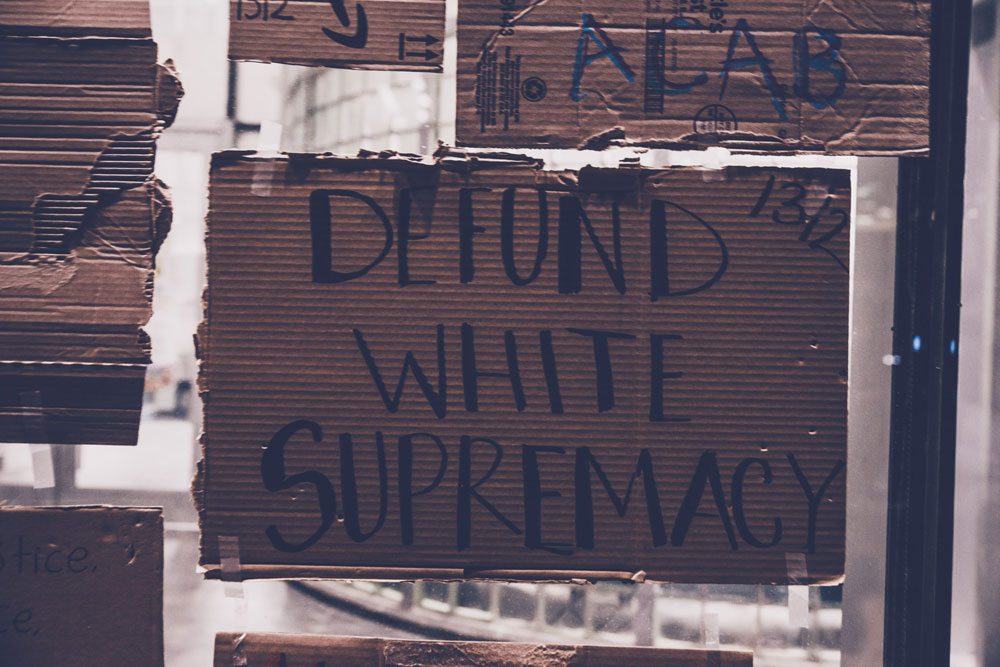
August 27, 2020; Brennan Center for Justice and the Guardian
George Floyd’s murder beneath the knee of a Minneapolis police officer set off a national debate over policing and race. His death was just one in a string of similar atrocities, but it was one too many, and the nation was not going to look away. Protestors took to the streets, asserting “Black lives matter” and challenging the systemic racism baked into the structure of how we police our neighborhoods. The problem we face goes much deeper than implicit bias and cultural norms. We are being asked to directly confront a serious problem of white supremacy.
Writing recently for the Brennan Center for Justice, retired FBI agent Michael German highlighted how we have tolerated overtly racist men and women as active police officers:
Since 2000, law enforcement officials with alleged connections to white supremacist groups or far-right militant activities have been exposed in Alabama, California, Connecticut, Florida, Illinois, Louisiana, Michigan, Nebraska, Oklahoma, Oregon, Texas, Virginia, Washington, West Virginia, and elsewhere. Research organizations have uncovered hundreds of federal, state, and local law enforcement officials participating in racist, nativist, and sexist social media activity, which demonstrates that overt bias is far too common. These officers’ racist activities are often known within their departments, but only result in disciplinary action or termination if they trigger public scandals.
When confronted with patterns of racist application of the law, like disproportionately arresting people of color, police departments have agreed to act—either willingly or under court order. Often, this comes as attempts to change departmental culture by increased hiring of officers of color or training programs to build cultural awareness. But these efforts are undermined when hate spewed by active officers is ignored. The problem undergoes a sea change, from “racism” to “allowing racism to become public.”
For example, in Anniston, Alabama, city officials learned in 2009 of a police officer’s membership in the League of the South, a white supremacist secessionist group. The police chief, however, determined that the officer’s membership in the group did not affect his performance and allowed him to remain on the job…
The officer was promoted to sergeant and eventually lieutenant. It wasn’t until 2015, after the Southern Poverty Law Center published an article about a speech he had given at a League of the South conference in which he discussed his recruiting efforts among other law enforcement officers, that the police department fired him.
Sign up for our free newsletters
Subscribe to NPQ's newsletters to have our top stories delivered directly to your inbox.
By signing up, you agree to our privacy policy and terms of use, and to receive messages from NPQ and our partners.
These beliefs, when allowed to steep, become evident when police use a racist lens to guide their responses. German cites a Portland, Oregon report on how their city’s police behaved to different groups of protesters. The report quoted a police lieutenant who “felt the right-wing protesters were ‘much more mainstream’ than the left-wing protesters.”
Allegations of the bureau’s bias surfaced again when Willamette Week, Portland’s alternative weekly newspaper, published friendly text messages between a Portland Police Bureau lieutenant and the out-of-state leader of a far-right group whose members had engaged in violence at these rallies. The texts included advice on how one member with an active warrant could avoid arrest and details about the movements of opposing groups.
A recent story in Business Insider reads ominously in the wake of the killing of two protestors on the streets of Kenosha:
A police officer in Salem, Oregon, told armed white men that meant to protect businesses during police brutality protests to “discreetly” stay inside before they began arresting protesters who remained in the streets after the city’s 11 pm curfew.
“My command wanted me to come talk to you guys and request that you discreetly remain inside the buildings or in your vehicles, somewhere where it’s not a violation,” said a police officer who has not been publicly identified. “So we don’t look like we’re playing favorites.”
German also warns that the danger of racist violence will spread beyond the walls of the police station. “Far-right militants can engage in violence and walk away while protesters are met with violent police actions,” he says. “This ‘negligent response’…empowers violent groups in dangerous and potentially lethal ways: The most violent elements within these far-right militant groups believe that their conduct is sanctioned by the government. And therefore they’re much more willing to come out and engage in acts of violence against protesters.”
Ignoring or tolerating the deep racism with the ranks of the police guarantees that BIPOC communities will continue to be unfairly treated, that more violence will be brought upon them by those sworn to serve them, and we will not have peace in our streets. And it is counterproductive even for those who strongly support the police. As German observed in the Guardian, “Law enforcement alignment with violent and racist groups only adds further fuel to the movement. In a time when the effort to defund police is getting some salience, the police are behaving in such a way as to justify that argument.”—Martin Levine













